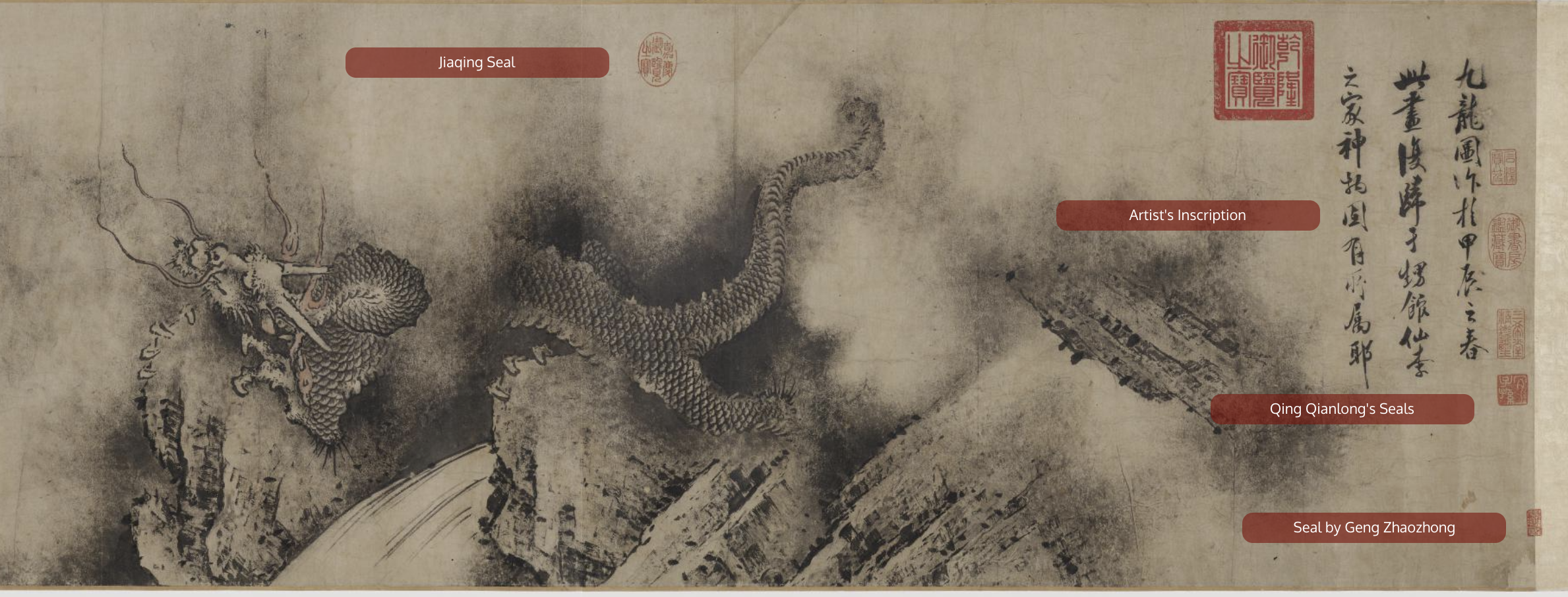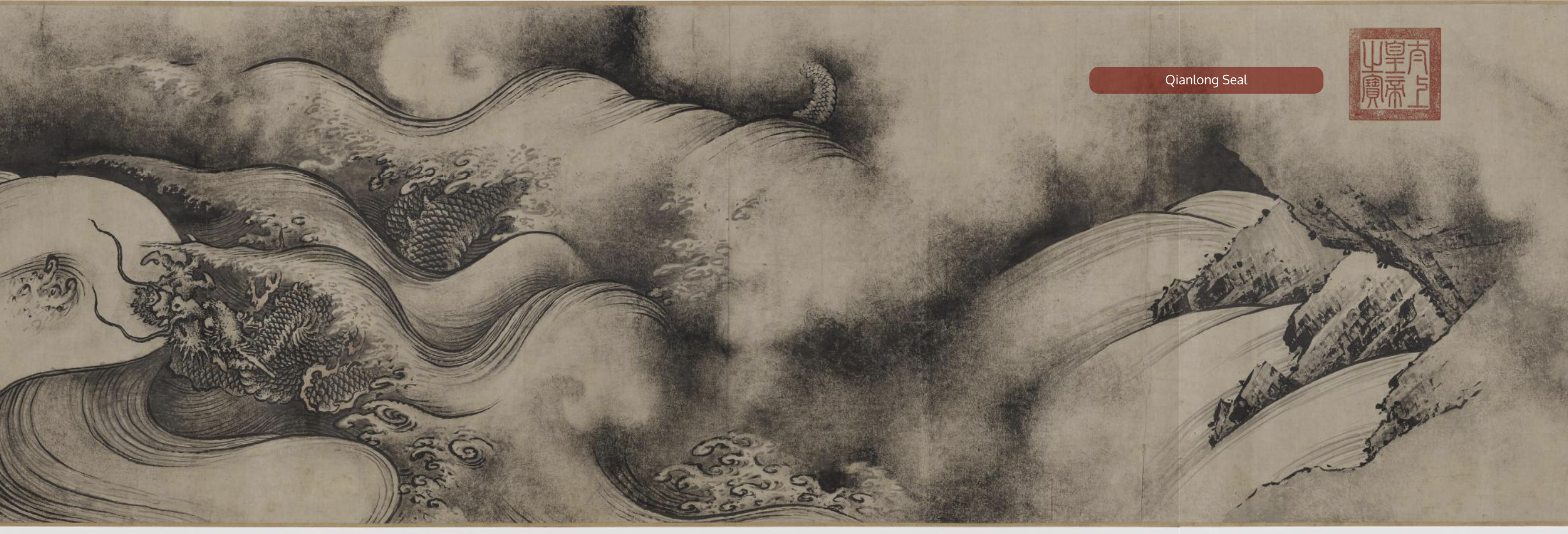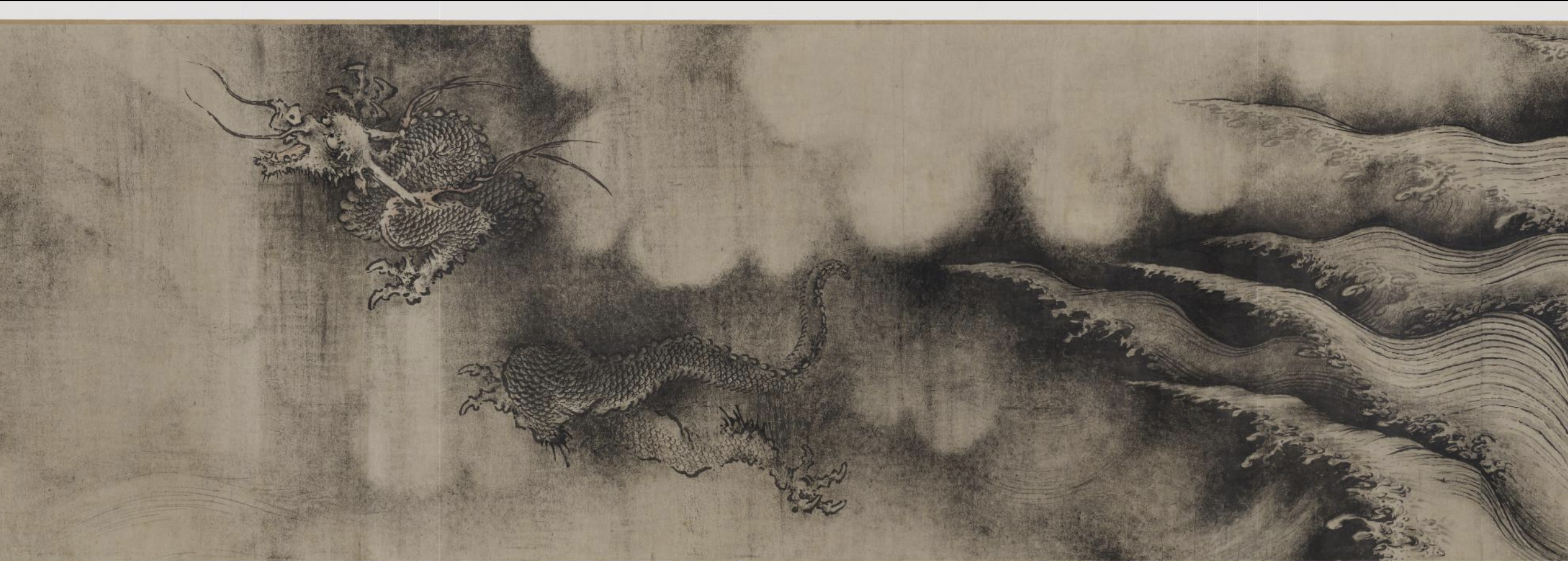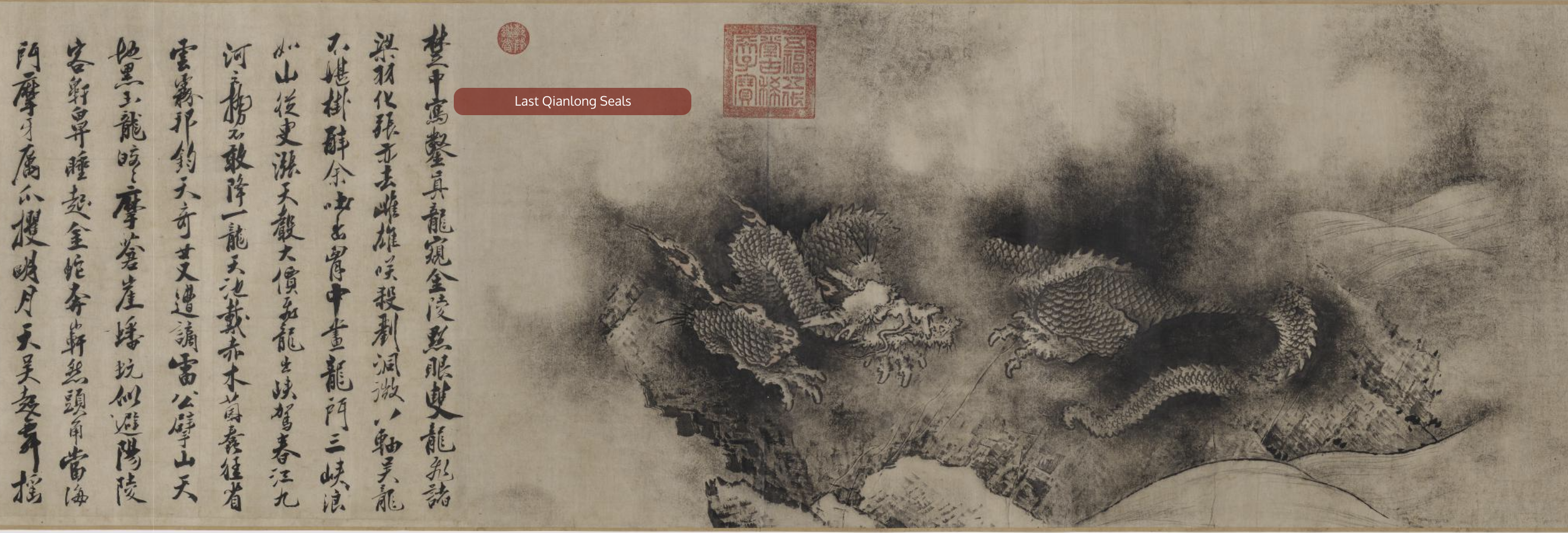Dragon Paintings in the Song and Yuan Dynasties
The emergence of Dragons as an Independent Genre
During the Song dynasty, dragon paintings emerged as an independent painting genre. As a result, Chinese artists were given more room to experiment with styles, techniques, and compositions that they felt would best capture the likeness and spirit of the imaginary creature (Tseng). Simultaneously, ideas about the representation of the supernatural (including dragons) regained discussion as scholars pointed out that the form of the supernatural could be easily fabricated since they are not fully visible (Wenyuange). Nonetheless, the composition and form of the dragon developed during the Song Dynasty are closest to what is now generally regarded as the Chinese Dragon.
 From right to left: Dragons 2 and 3
From right to left: Dragons 2 and 3
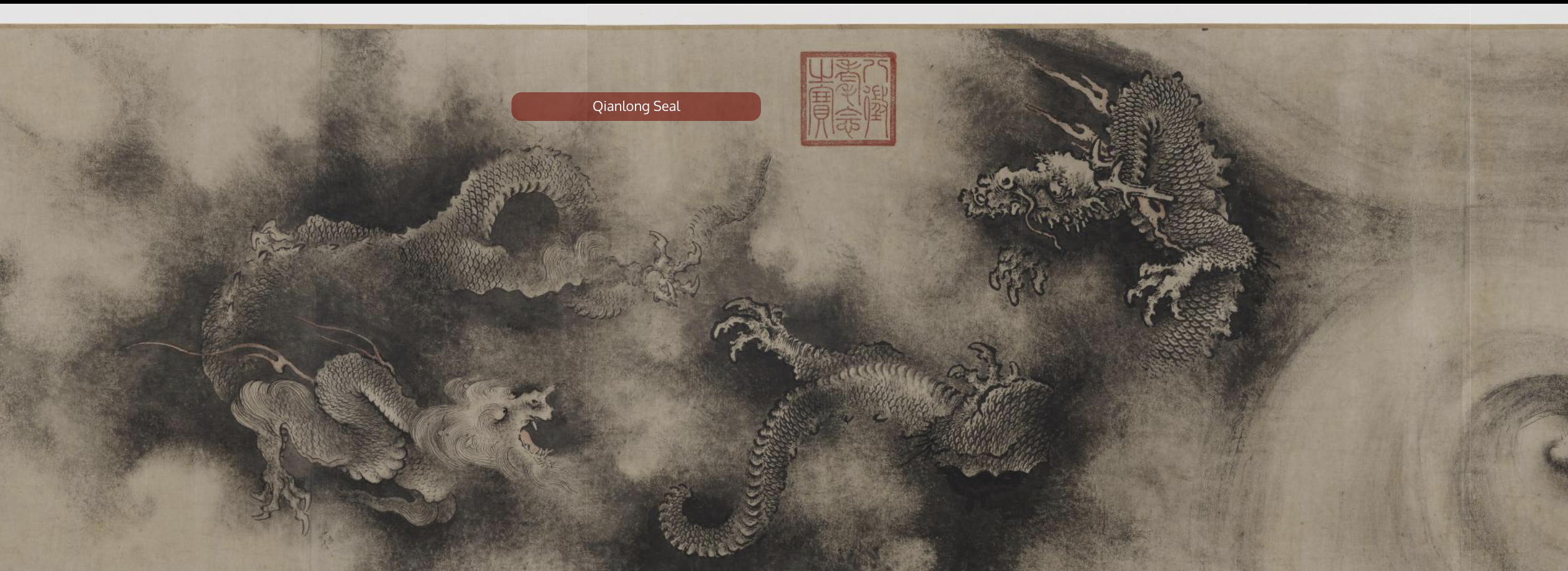 From right to left: Dragons 5 and 6
From right to left: Dragons 5 and 6
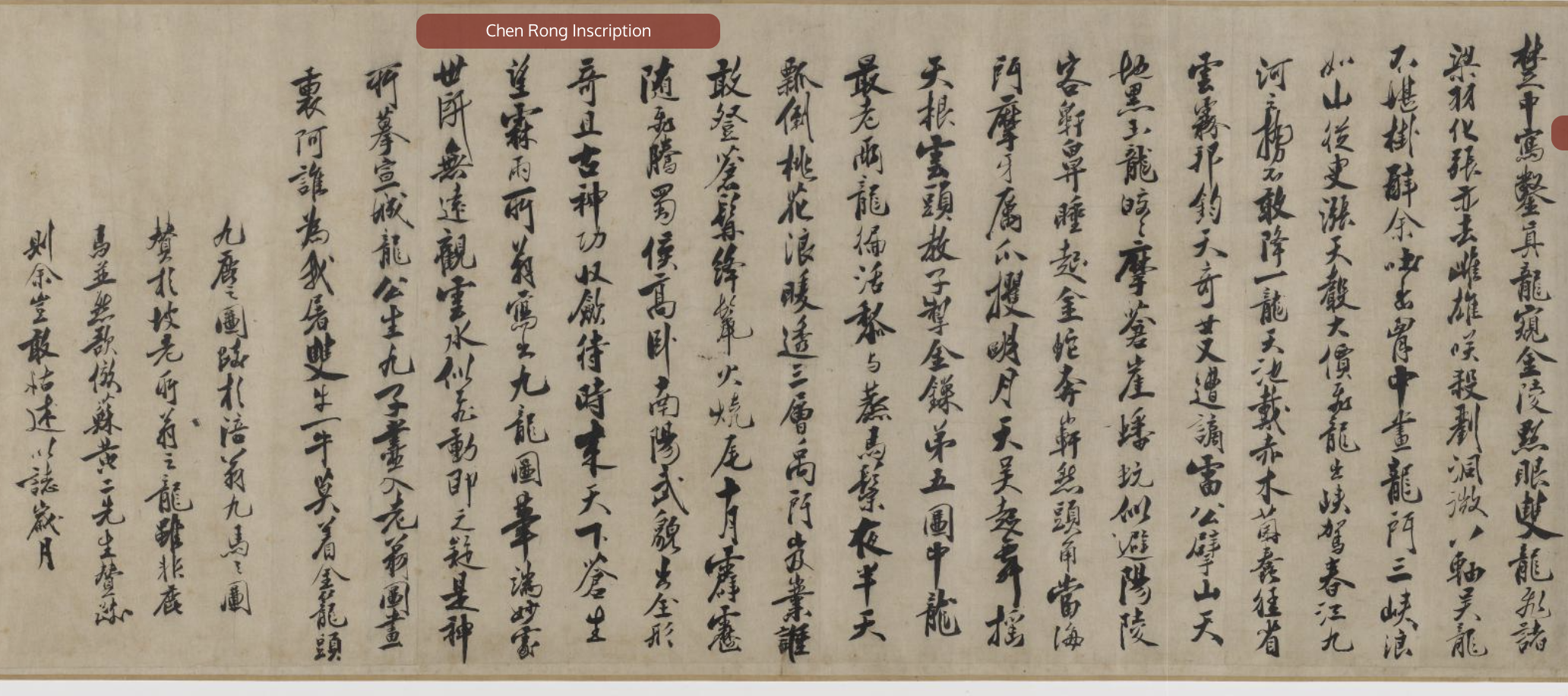 Chen Rong’s Inscriptions.
Chen R., (First Half of the 13th Century). Nine Dragons; Handscroll, ink on paper. Museum of Fine Arts Boston, Massachusetts, United States.
Chen Rong’s Inscriptions.
Chen R., (First Half of the 13th Century). Nine Dragons; Handscroll, ink on paper. Museum of Fine Arts Boston, Massachusetts, United States.
Nine Dragons is a paper scroll by southern Song dynasty artist, Chen Rong, measuring 46.8 cm in height and 14996.5 cm in length. Chen Rong is widely celebrated for his depictions of dragons and this painting, in particular, is highly praised for its grandeur length and style. The monochromatic black ink painting dates back to 1244 and is currently the lengthiest surviving painted dragon scroll. It is now housed in the Museum of Fine Arts in Boston. The painting also features running scripts and inscriptions that give details about Chen Rong’s motivations for the painting. From the inscriptions, we know that Chen Rong was inspired by two earlier paintings, namely, Nine Horses and Nine Deer. They were, respectively, created by Cao Ba (AD 704-770), a general and painter of the Tang Dynasty (AD 618-907), and Huichong, a monk and painter active in the early Northern Song Dynasty (960-1127). Not to many’s surprises, Chen Rong also painted another famous dragon handscroll called Five Dragons, but in vertical orientation.
Dragon Paintings as Bearers of Rain
Another development of dragon art as it pertains to the Song and Yuan dynasties is the conception of dragons as water. As such, dragon paintings were used in rain rituals by the state to summon rain (Purtle). In Song Shi (The History of the Song Dynasty), three accounts of state-prescribed rain rituals were recorded, two of which used dragon effigies.
Although the state had a well-defined and prescribed image of the dragon that was to be used in rain rituals as outlined in Painted Dragon Method of Praying for Rain (畫龍祈雨法), Chen Rong’s dragon is a strong deviation from that form. Regardless, the masterpiece was highly praised for being exceptionally good at summoning rain. The greatest difference in composition is his technique of action painting.
This technique, which is said to be most effective when Chen Rong was drunk, involves blotting, spitting, splashing, and splattering ink on the surface of the paper to create an image of rain and supernatural energy. Thus, the splattered and smeared ink became clouds, and split from the mouth became mist. In the 6th line of his poetic inscriptions, Chen Rong writes “Drunk, I spit forth painting from within (醉余吐出胸中畫)” (Purtle). But all of this to Chen Rong is largely a part of his creative process rather than for ritual purposes as he underscored the ability of his painted dragons to bring rain in lines 32 and 34 of his inscriptions.
Dragon rain rituals continued into the Yuan dynasty with most paintings being either a close copy of Song dragon paintings or previous paintings used repeatedly. One such work is Beneficent Rain by Zhang Yucai. Zhang Yucai was the thirty-eighth pope of the Zhengyi (“Orthodox Unity”) Daoist church, who lived at Mount Longhu (Dragon Tiger Mountain) in Jiangxi Province. He was often called upon by the Yuan court to commence rain and snow. Similarly, he would also perform rituals that summoned thunder and lightning to quell a sea monster.
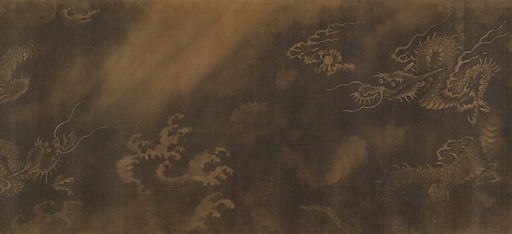
In Beneficent Rain, Zhang Yucai borrowed heavily from Chen Rong’s Nine Dragons scroll. Chen Rong’s style is so meticulously mimicked that the exact pictorial form and composition of Zhang’s dragons are mirror-image reversals of Chen Rong’s third and fourth dragons. Additionally, Beneficent Rain has a similar imagery of water and wetness that is used to represent the atmospheric effects of rain. Although there is no existing text connecting these two works, the fact that Zhang Yucai presumably copied parts of Nine Dragons’ inscriptions indicates that he intended to duplicate the ritual agency of the original. Unlike Chen Rong’s dragons, Zhang Yucai’s dragons are ink on silk and are housed at the Metropolitan Museum of Art in New York.
